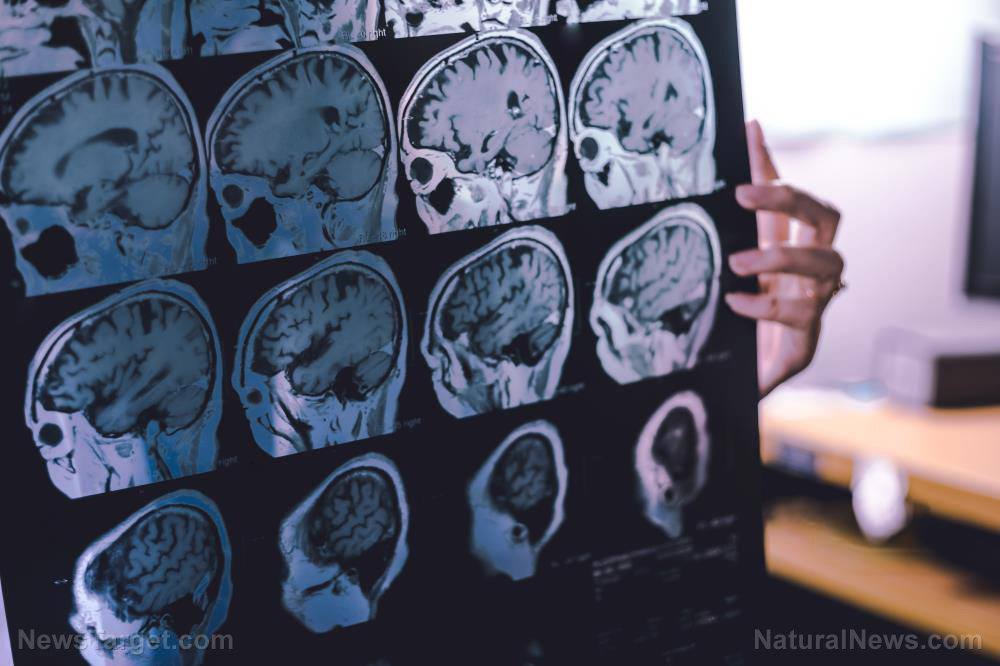Coronavirus causes so much brain damage in severe cases that victims FORGET TO BREATHE
03/09/2020 / By Ethan Huff

A new peer-reviewed study published in the Journal of Medical Virology has found that one of the horrific mechanisms of death for the Wuhan coronavirus (CoVid-19) involves its worst victims experiencing so much brain damage from the pathogen that their bodies actually forget how to breathe.
Bearing a similar pathology to SARS (severe acute respiratory syndrome) and MERS (Middle East respiratory syndrome), the Wuhan coronavirus (CoVid-19) kills many of its victims with acute, highly lethal pneumonia. And in the most serious cases, it can also inhibit spontaneous breathing, meaning the autonomic nervous system loses its ability to automatically draw in oxygen and expel carbon dioxide.
Other common symptoms associated with the Wuhan coronavirus (CoVid-19) include headache, nausea, and vomiting.
“This virus shares highly homological sequence with SARS?CoV, and causes acute, highly lethal pneumonia (COVID?19) with clinical symptoms similar to those reported for SARS?CoV and MERS?CoV,” the study reveals.
“The most characteristic symptom of COVID?19 patients is respiratory distress, and most of the patients admitted to the intensive care could not breathe spontaneously.”
Listen below as Mike Adams, the Health Ranger, explains how the Wuhan coronavirus (CoVid-19) has already become an unstoppable global pandemic, which means you need to prepare for the worst:
Coronavirus doesn’t just affect the lungs; it can also get into the nervous system
There’s also evidence emerging to suggest that the Wuhan coronavirus (CoVid-19) isn’t confined solely to the respiratory tract. The novel disease can also invade the central nervous system, potentially causing an array of neurological problems.
Both animal and human cases of the virus show that it can and does lodge itself in the brain, including in the brainstem. There have also been cases in which the Wuhan coronavirus (CoVid-19) spread from the lungs and lower respiratory airways to the medullary cardiorespiratory center via a synapse-connected route.
What all of this suggests, of course, is that the Wuhan coronavirus (CoVid-19) remains even more of a mystery than previously believed. With multiple infection routes and a propensity towards brain embedment, this isn’t just the flu or a cold as some are claiming.
“In light of the high similarity between SARS?CoV and SARS?CoV2, it is quite likely that the potential invasion of SARS?CoV2 is partially responsible for the acute respiratory failure of COVID?19 patients,” the paper concludes.
“Awareness of this will have important guiding significance for the prevention and treatment of the SARS?CoV?2?induced respiratory failure.”
Most critically ill coronavirus patients with pneumonia are dying
The latest reports about the effectiveness of treatment efforts reinforce some of the grim findings of this study, suggesting that those who become most ill from the Wuhan coronavirus (CoVid-19) typically end up dying.
For patients who develop critical illness with corresponding pneumonia, resulting in them having to be admitted to an intensive care unit (ICU), doctors all across the board are reporting “high” numbers of fatalities.
Another new study published in The Lancet, a sampling of 52 people with the virus found that over the 28-day span of the research, 32 of them died. This translates to a 61 percent death rate, which is far higher than the couple percent being reported by the mainstream media.
“For comparison, mortality rates generally ranging between 30 and 40 percent are observed for patients who are sickened by ordinary seasonal flu and are fighting pneumonia and acute respiratory distress syndrome in ICUs,” reports The Washington Post, revealing that this thing is not just another ordinary disease.
At a hospital in Lodi, Italy, an infectious disease doctor has reported that nearly all of the coronavirus patients being admitted there are developing pneumonia, further suggesting that more cases of the disease than not end up becoming critical – meaning they’re likely to lead to death.
For more related news about the Wuhan coronavirus (CoVid-19), be sure to check out Pandemic.news.
Sources for this article include:
Tagged Under: brain damage, breathing, China, coronavirus, covid-19, disease, forget, global emergency, infection, neuroinvasive, neurological damage, novel coronavirus, outbreak, pandemic, respiratory failure, symptoms, virus, Wuhan, Wuhan coronavirus
RECENT NEWS & ARTICLES
COPYRIGHT © 2017 BRAIN NEWS



















